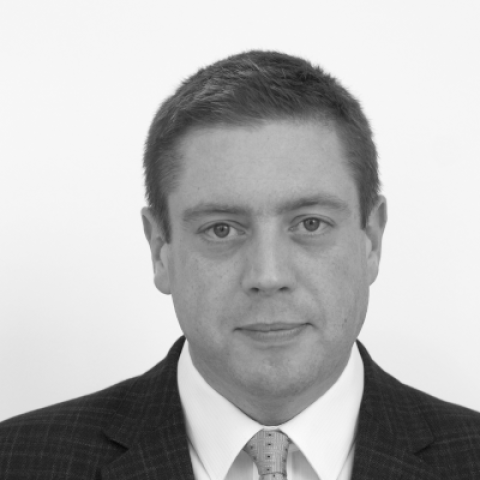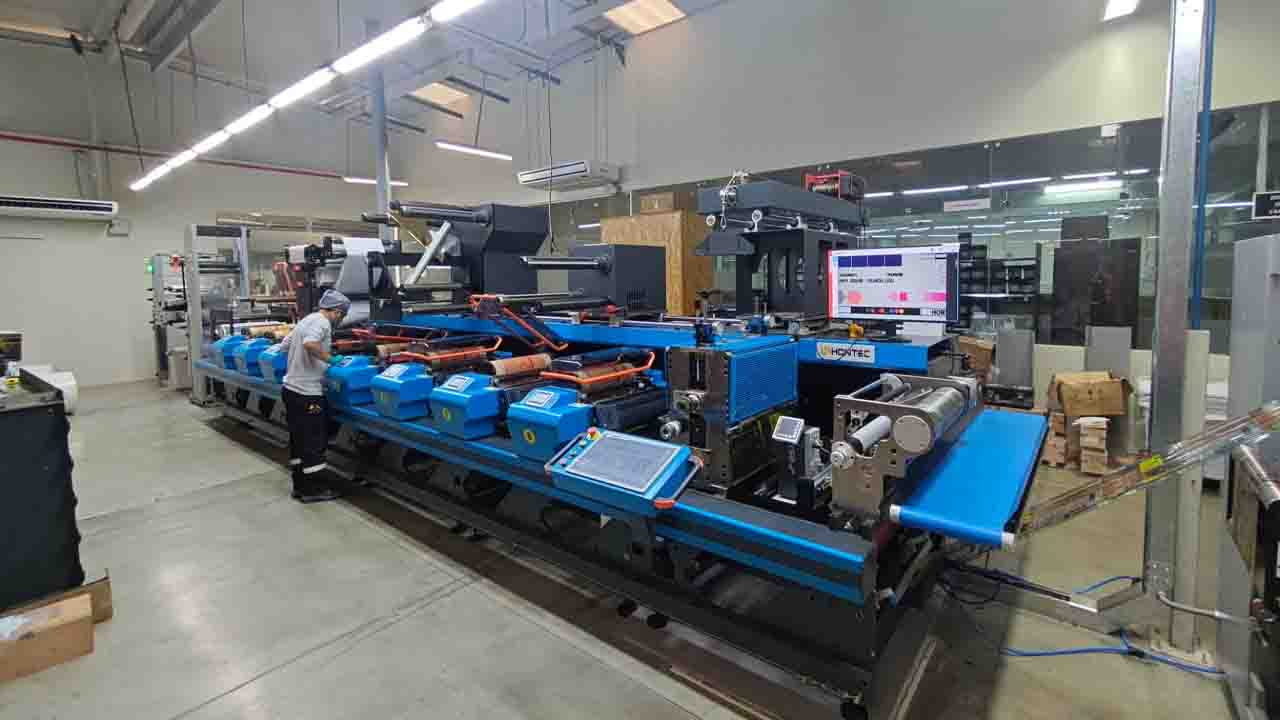Impressive growth for Peruvian heavyweight
With 18 percent annual growth for five years and a 22m dollar investment, Kuresa is not only Peru’s largest label printer; it is one of the most exciting converters in Latin America. James Quirk reports
These are exciting times for Kuresa, Peru’s leading producer of self-adhesive labels and tapes. The Lima-based company is in the midst of an investment program of more than $22 million that will see it move to a new 23,000 square meter site early next year – an area more than three times the size of its current premises.
The land for the new site, 20 kilometers from its existing operation, was purchased in 2007. Construction began in May 2010 and the move will take place before June of next year. The new site more than doubles actual production space, which is almost at full capacity in Kuresa’s current factory.
The company installed a third Ilma hybrid letterpress machine in 2008 and a fourth has been purchased for the new site. The new facility will also house a new adhesive coating machine – the company’s largest ever single investment at $9.5 million – which will benefit both Kuresa’s label printing and adhesive tape divisions.
‘It’s a massive investment for us and it will completely transform the company from a regional manufacturer to a world-class player,’ says Jaime Yoshiyama, managing director. ‘There is great potential for growth of the label sector in Peru and neighboring countries, and I want Kuresa to take full advantage of it.’
Between 2004 and 2009, the company’s average compound growth was an impressive 18 percent. Yoshiyama cites the growth in the Peruvian economy and export markets, as well as continuous in-house process improvement as the reasons for the company’s progress; progress which has seen it scoop Finat’s Best Rotary Letterpress Printing Award for four consecutive years between 2007-2010.
‘We’re producing the same products; we’re just doing it better,’ says Yoshiyama. ‘The awards show me that we are operating at a good technical level: competing with top European companies is no small achievement. Our employees are really talented and well-trained: these awards are a credit to them.’
From tapes to labels
Kuresa was founded in 1965 as a producer of adhesive tapes. Today its 7,000 square meter plant, which houses 260 employees, is split into three main areas: coating of adhesive tapes, slitting and packaging of adhesive tapes – both of rolls produced in-house and those imported for direct supply at home and abroad – and printing of adhesive tapes and pressure sensitive labels. Adhesive tapes, sold under the Pegafan brand, Peru´s market leader, make up 50 percent of the company’s business; 25 percent comes from sales of prime labels, with a further 25 percent coming from the sale of Pilot pens and office consumables.
Kuresa has 60 percent of the local adhesive tape market and also exports 14 percent of its turnover to Europe and other countries in Latin America. Products include packaging tapes for cardboard boxes, masking tapes, cellulose tapes, invisible acetate tapes, double sided tapes and special security tamper-evident tapes.
Tape materials are produced using an adhesive coating machine that dates from 1980. It will be replaced by the new coater, to be installed in the new factory at the end of the year, which is 40 meters in length and 7 meters high. It runs at ten times the speed of the current machine, and will also allow Kuresa to produce its own specialty self-adhesive label material.
Kuresa began printing labels in 1998 with the installation of a flexo press from Italian company Ecoflex. Letterpress quickly became the company’s core technology, however, with the installations of presses from Swiss manufacturer Ilma in 2000 and 2002.
Ilma, which was founded by former employees of Gallus, no longer manufacturers the machines, of which there are around 50 installed worldwide, though it continues to offer spare parts and service. The 6-color press with a web width of 340mm, that will be installed in Kuresa’s new factory in February 2011, was purchased from a German converter, and is currently being restored and reconfigured in Switzerland. Kuresa’s three existing Ilma presses are UV letterpress machines of five, six and seven colors respectively; two have a web width of 280mm and one is of 340mm.
Each of the presses has flexo, silkscreen and hot and cold stamping capabilities, and can print variable data for promotional applications. They are equipped with inspection systems from BST, web cleaning equipment from Teknek and Kelva, corona treatment and lamination. Proofing and mounting equipment come from JM Heaford, while finishing is handled by Rotoflex machines.
Running two shifts six days a week, the company produces three million square meters of self-adhesive labels per year. Eighty-five percent of production serves the local market, with the remainder exported to Bolivia, Colombia and Ecuador. Sixty percent of the company’s production is for the personal care market; 20 percent goes to household goods. The pharmaceutical industry accounts for a further 10 percent, with the remainder divided between the beverage market and promotional applications.
According to Yoshiyama, expansion into label printing was a natural evolution for the company. Before beginning to produce labels, Kuresa was already printing adhesive tapes in flexo, and imported and sold label materials and inks to small flexo printers in Peru. This stopped when it began printing labels in-house, but served as the first step in gaining knowledge of the label market.
‘The press operators already had experience in printing,’ he says, ‘and knowledge had been acquired from the suppliers of label inks and materials.’
Kuresa was the first company in Peru to print prime labels using a combination of printing technologies. Gustavo Mifflin, Kuresa’s sub-manager of production who runs the label printing operation, says: ‘At the time, letterpress offered the best quality on the market; better than flexo. Flexo has of course improved greatly since then. But we have the units, so we have the option.’ Jaime Yoshiyama echoes this dedication to letterpress technology: ‘Flexo doesn’t interest me much yet: letterpress provides more consistent quality and this is the most important benefit that we are able to offer our customers. We prefer to know one type of printing process intimately and this is why Kuresa is so focused on letterpress technology.’
One of Kuresa’s three shareholders is Swiss, and Yoshiyama says that this connection has created a closer affiliation to technology from Europe compared to the US.
Knowledge through partnerships
Kuresa pays close attention to the training of its staff and acquiring knowledge from companies around the world. This philosophy is partly dictated by a lack of local training facilities and technical support within Peru. Training takes place in-house, though most of the original press operators, trained in Switzerland for three months during the first installation of an Ilma machine, remain at the company. Because of the distance between Peru and Switzerland, the operators are trained to maintain as well as operate the presses.
One of Kuresa’s key relationships has been with Dutch converter Kolibri Label, also a user of Ilma letterpress machines, run by former Finat president Jan Frederik Vink. Both Jaime Yoshiyama and Gustavo Mifflin have visited many times. ‘We have a management culture of ensuring that the company’s leaders are kept up to speed with the latest technology and advances in the industry,’ says Yoshiyama. ‘Our partnership with Kolibri has been an important part of this.’
‘There is a large distance between the companies, but the relationship is very close,’ echoes Gustavo Mifflin. ‘We have learned a great deal from them.’
Yoshiyama says he has made around 20 fact-finding trips to Europe over the years, and he has also spent a lot of time with Kuresa’s suppliers, such as Fasson, Herma, Kocher + Beck and Siegwerk. ‘Studying, learning and reading have all been crucial parts of the company’s philosophy,’ says Gustavo Mifflin. ‘Information and articles in Labels & Labeling have also been important.’
Jaime Yoshiyama is a strong advocate of the importance of informal partnerships with other converters. ‘We have great relationships with companies around the world, such as Kolibri in Holland, and Germark in Spain,’ he says. ‘We are not competing in the same markets, so there is an opportunity to collaborate and share knowledge.’
Kuresa has been a member of Finat for eight years, and Yoshiyama is grateful for the networking opportunities this has provided. ‘It is thanks to Finat that we were able to meet these companies,’ he says. ‘When I visit Europe, I see that converters are often far ahead of us in terms of streamlining processes and lean manufacturing. There is much to learn from these companies in that area.’ Lean manufacturing is due to be implemented in Kuresa’s new factory.
Yoshiyama is refreshingly modest. Kuresa itself has plenty to offer its European counterparts; indeed, Jan Frederik Vink has said that the laboratory at Kolibri was partly inspired by Kuresa’s.
As well as research and development – recent innovations include scratch-off promotional labels – this laboratory conducts quality testing and follows materials at every step from entry into the factory until the final product. Up to seven different tests are conducted on all labels, samples of which are kept for two years for quality control.
Each label job is ordered by a bar code that allows easy access to job information and is linked to plate specifications. This allows for total traceability of production orders in the event that the information is required later. Platemaking is performed in-house using water-based systems from Agfa and BASF. ‘We’ve had in-house pre-press from the beginning,’ says Yoshiyama. ‘It offers increased security to clients, as new product information cannot be leaked. This is greatly valued by our customer base.’
Future growth
Yoshiyama is enthusiastic about Peru’s improving market conditions. Now experiencing the highest GDP growth in Latin America, the country has come a long way since the late 1980s, when hyperinflation accumulated to 5,000 percent over a five-year period from 1985-1990, amidst protectionist economic policies and anti-government terrorism. Peru stagnated during this time – many companies, including major brands, left the country – and Yoshiyama cites it as a reason for Peru falling behind Colombia in terms of industrial development despite having not-dissimilar populations: Peru with 30 million compared to Colombia’s 46 million.
Yearly per capita label consumption in Peru and neighboring countries is currently around 1.5 square meters a person, which is why Yoshiyama sees a great deal of potential in both the local market and in increasing the company’s exports. ‘From a geographical point of view, Peru is well positioned to serve various markets,’ he says. ‘I want to increase export to countries like Colombia, Ecuador, Bolivia, Venezuela and Chile; which is why we are increasing our production capacity and are working on streamlining our label production processes.’
With a history of quality prime label production coupled with exciting investment plans, Kuresa is well-positioned to continue to take advantage of Peru’s favorable economic conditions. Future entrants to Finat’s letterpress award category should expect even tougher competition.
Pictured: Jaime Yoshiyama with a model of Kuresa’s new 23,000 square meter site
This article was published in L&L issue 4 2010
Click here for more stories about Kuresa on L&L.com.
Stay up to date
Subscribe to the free Label News newsletter and receive the latest content every week. We'll never share your email address.


